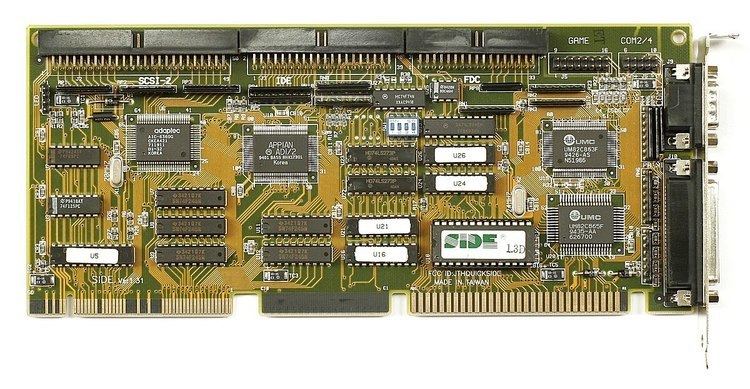Created by VESA Width in bits 32 Speed 25-40 MHz | Superseded by PCI (1993) No. of devices 3 | |
 | ||
Year created 1992; 25 years ago (1992) | ||
The VESA Local Bus (usually abbreviated to VL-Bus or VLB) is a short-lived expansion bus that was mostly used in personal computers. VESA (Video Electronics Standards Association) Local Bus worked alongside the ISA bus, acting as a high-speed conduit for memory-mapped I/O and DMA, while the ISA bus handled interrupts and port-mapped I/O.
Contents
Historical overview
In the early 1990s, the I/O bandwidth of the ISA bus was becoming a critical bottleneck to PC graphics performance. The need for faster graphics was being driven by increasing adoption of graphical user interfaces in PC operating systems. While IBM's attempt at producing a successor to ISA with the Micro Channel Architecture was a technically viable option, it failed in the market due to its proprietary nature and imposition of licensing fees. The competing EISA open standard was still unable to offer enough performance improvement over ISA to provide a solution. Thus for a short time, hardware producers created proprietary implementations of local buses on their motherboards to give graphics cards direct access to the processor and system memory – and avoid the limitations of the ISA bus. However, as these manufacturer-specific solutions were not standardized, there were no provisions for providing interoperability between them. This led to the VESA consortium proposing and defining a Local Bus standard in 1992. Additionally while greater graphics card performance was a primary goal of VLB, other devices could also benefit from the VLB standard; notably many mass storage controllers were offered for VLB with increased hard disk performance.
A "VLB slot" itself was simply an additional edge connector placed in-line with the traditional ISA or EISA connector, with this extended portion often colored a distinctive brown. The result was a normal ISA or EISA slot being additionally capable of accepting VLB-compatible cards. Traditional ISA cards remained compatible as they would not have pins past the normal ISA or EISA portion of the slot. The reverse was also true – VLB cards were by necessity quite long in order to reach the VLB connector, and were reminiscent of older full-length expansion cards from the earlier IBM XT era. Ironically, the VLB portion of a slot looked similar to an IBM MCA slot, as indeed it was the same physical 116-pin connector used by MCA cards, rotated by 180 degrees. The IBM MCA standard had not been as popular as IBM expected and there was an ample surplus of the connector, making it inexpensive and readily available.
Limitations
The VESA Local Bus was designed as a stopgap solution to the problem of the ISA bus's limited bandwidth. As such, one requirement for VLB to gain industry adoption was that it had to be a minimal burden for manufactures to implement, in terms of board re-design and component costs; otherwise, manufacturers would not have been convinced to change from their own proprietary solutions. As VLB fundamentally tied a card directly to the 486 processor bus with minimal intermediary logic (reducing logic design and component costs), timing and arbitration duties were strongly dependent on the cards and CPU.
This simplicity of VLB unfortunately created several factors that served to limit its useful life substantially:
Legacy
Despite these problems, the VESA Local Bus became very commonplace on later 486 motherboards, with a majority of later (post-1992) 486-based systems featuring a VESA Local Bus video card. VLB importantly offered a less costly high speed interface for consumer systems, as only by 1994 was PCI commonly available outside of the server market via the Pentium and Intel's chipsets. PCI finally displaced the VESA Local Bus (and also EISA) in the last years of the 486 market, with the last generation of 80486 motherboards featuring PCI slots in lieu of VLB capable ISA slots. However a few manufacturers did develop and offer "VIP" (VESA/ISA/PCI) motherboards with all three slot types.
